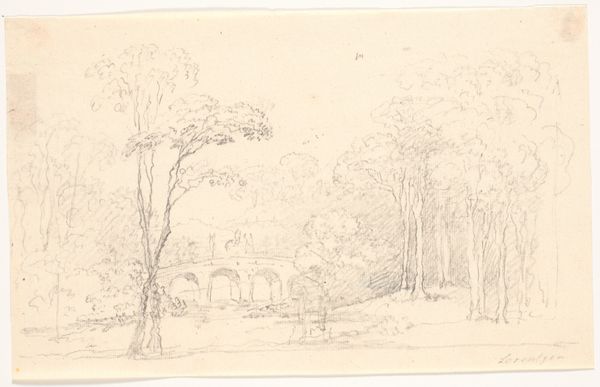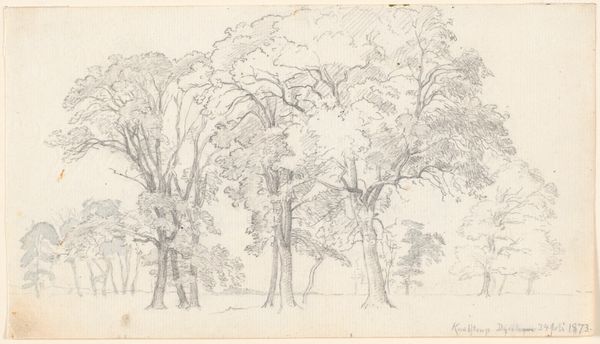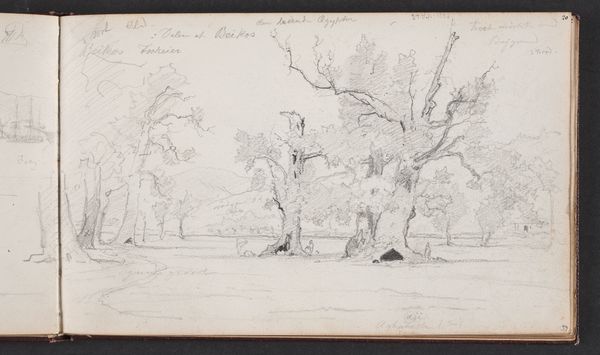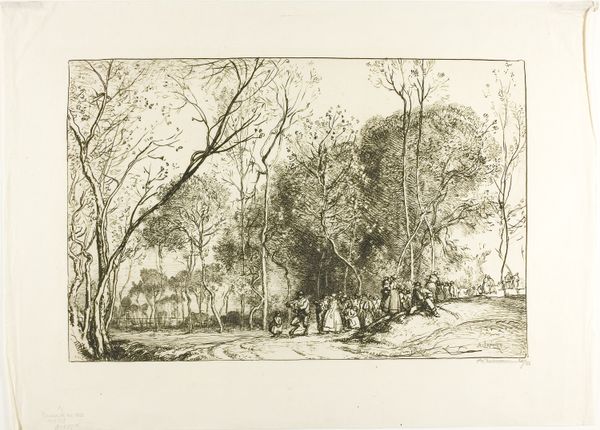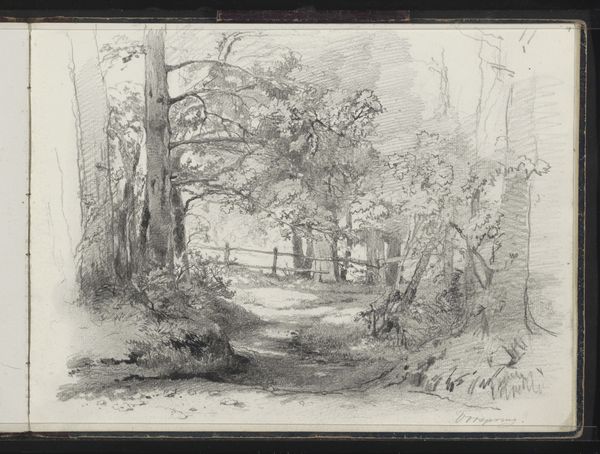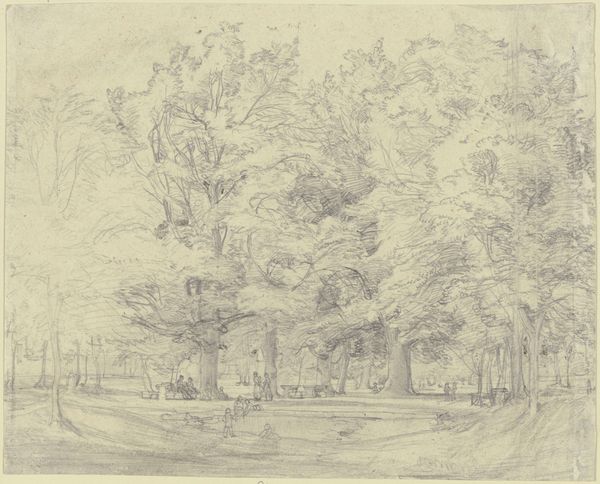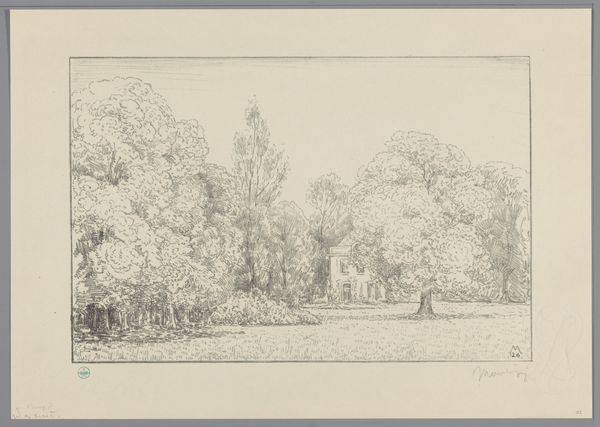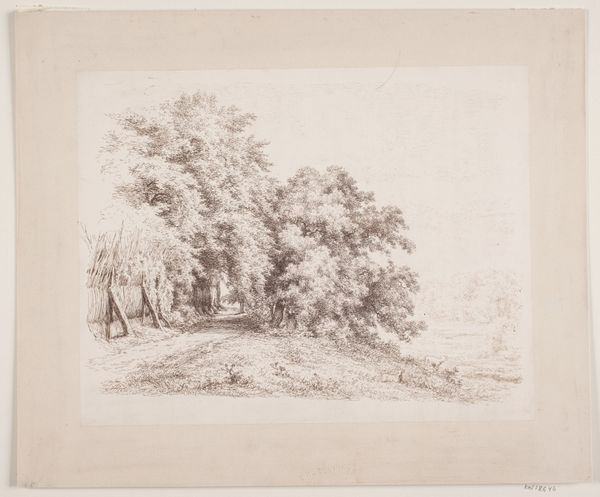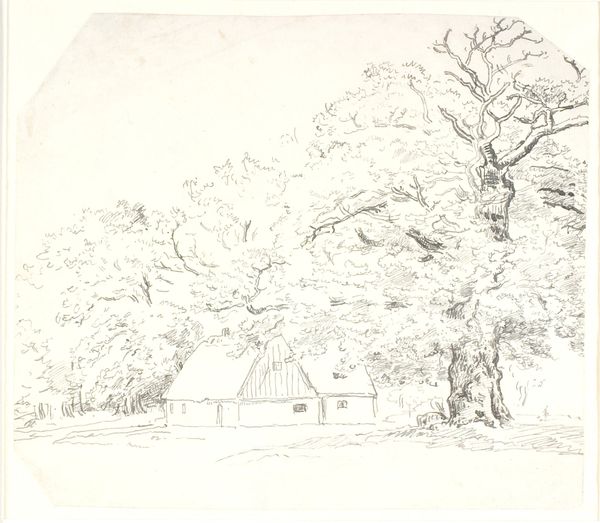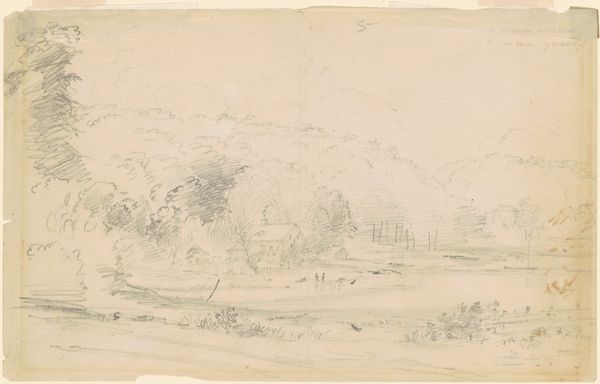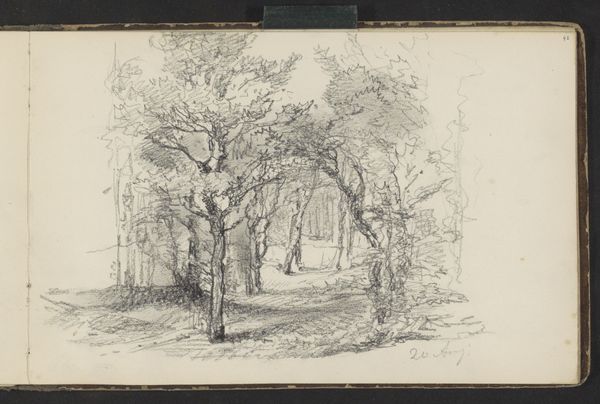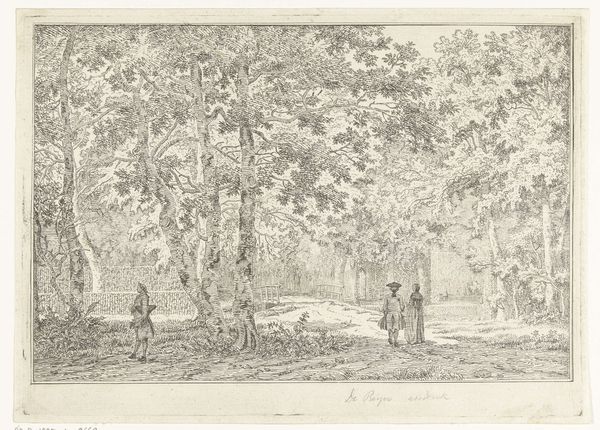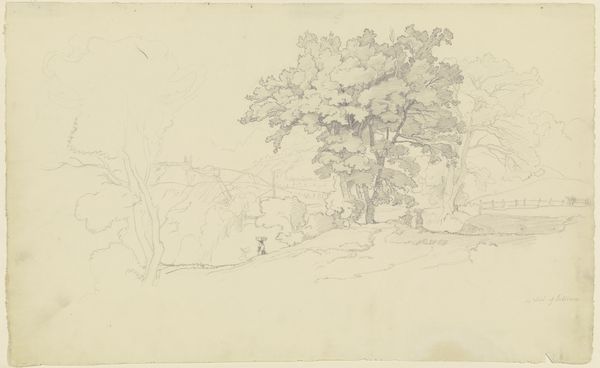
Landschap met bomen en schoven, bij het landgoed van Kasteel Twickel, bij Delden 1844 - 1909
0:00
0:00
drawing, paper, pencil
#
drawing
#
landscape
#
paper
#
pencil
#
northern-renaissance
#
realism
Dimensions: height 254 mm, width 362 mm
Copyright: Rijks Museum: Open Domain
Editor: This delicate pencil drawing, "Landscape with Trees and Sheaves, near the Twickel Castle Estate, near Delden," possibly created between 1844 and 1909 by Sientje Mesdag-van Houten, captures a serene landscape. What strikes me is the density of the pencil work, especially around the trees. How do you read this work? Curator: Looking at the application of pencil on paper, I see more than just a pastoral scene. I consider the materiality. Pencil, in the 19th century, wasn't just a drawing tool. It was a manufactured product, dependent on access to graphite, wood, and a system of distribution. Van Houten's choice of such an accessible material challenges the perceived boundaries of "high art". The mass production is a means to examine societal access to art materials. Do you see any echoes of social structures within the landscape itself? Editor: That's fascinating! I hadn't thought about pencil production itself. Thinking about the social structures… perhaps the detailed rendering of the trees, compared to the vaguer field, hints at land ownership or even idealized rural labor? Curator: Precisely. Think about the estate itself, Kasteel Twickel. Land ownership was power. Van Houten's detailed rendering focuses our attention on that controlled space, subtly referencing labor and the hierarchy of the estate system through a readily available, mass-produced material. We also cannot separate gender here. We are thinking of her limited access and artistic training, she might also have to use materials that are easier to obtain than paints for example. What labor allowed her to obtain this pencil and paper? What labour of support did she receive to work in the first place? Editor: I never would have considered all of that. I now look at this gentle landscape in a very different light, recognizing the socio-economic context embedded within such common materials. Curator: Indeed, the simplest tools often reveal the most complex narratives of production, class, and culture.
Comments
No comments
Be the first to comment and join the conversation on the ultimate creative platform.
